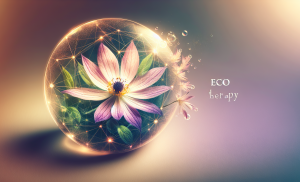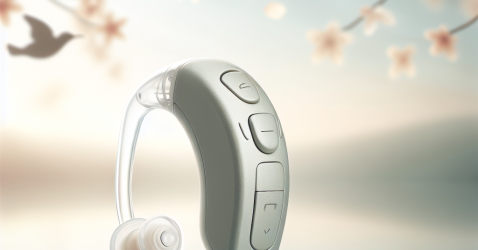After-Work Unwind: Mindful Practices To Leave Stress Behind
In today’s fast-paced world, stress has become an inevitable part of our lives, particularly after a long day at work. However, there are mindful practices that can help you leave stress behind and find inner peace. From deep breathing exercises to guided meditation, these techniques can help you disconnect from the demands of the day and reconnect with yourself. So, take a moment to unwind, relax, and discover the power of mindfulness in transforming your after-work experience.
Mindful Practices for Unwinding After Work
In today’s fast-paced and stressful world, finding ways to unwind after work is crucial for maintaining balance and overall well-being. Incorporating mindful practices into your daily routine can help you leave the stress of the workday behind and create a calming and peaceful atmosphere for relaxation. Let’s explore some effective and enjoyable ways to unwind after work.
Why Mindfulness is Important for Stress Relief
Before we delve into specific practices, it’s important to understand why mindfulness is essential for stress relief. Stress can have a detrimental impact on both our mental and physical health. It can lead to increased anxiety, lowered immune function, and even chronic conditions such as heart disease or depression. By practicing mindfulness, we can develop the ability to stay present and fully engaged in the current moment, helping to reduce stress and promote relaxation.
Creating a Peaceful Environment
Creating a peaceful environment is key to de-stressing after work. Your surroundings can greatly influence your mood and mindset. Here are some tips to create a calming and peaceful atmosphere:
Choosing a Calming Color Scheme
Selecting calming colors for your home or relaxation space can have a significant impact on your overall mood. Soft blues, greens, or neutrals are often associated with relaxation and tranquility. Consider painting your walls or incorporating these colors into your decor to create a serene environment.
Creating a Clutter-Free Space
A cluttered space often leads to a cluttered mind. Take some time to declutter your surroundings, removing any unnecessary items or excessive clutter. A clean and organized space will help promote a sense of calm and relaxation.
Adding Natural Elements
Bringing elements of nature indoors can help create a peaceful atmosphere. Consider incorporating plants or natural materials such as wood or stone into your environment. These natural elements not only add beauty to your space but can also have a calming and grounding effect on your mind.
Using Soft Lighting
Harsh overhead lighting can be harsh to the eyes and create a sense of tension. Opt for softer, warm lighting options such as lamps or candles. These gentle sources of light can create a cozy and soothing ambiance, perfect for unwinding after a long day.
Incorporating Aromatherapy
Aromatherapy has been used for centuries to promote relaxation and reduce stress. Consider using essential oils known for their calming properties, such as lavender or chamomile. You can use a diffuser or incorporate these scents into your bath or body products to create a soothing environment.
Establishing a Relaxation Routine
Creating a regular relaxation routine can help train your body and mind to unwind after work. Here are some essential steps to establish a relaxation routine:
Setting a Specific Time for Unwinding
Set aside a specific time each day dedicated to unwinding after work. This may be a fixed time or a window of time, depending on your schedule. By giving yourself permission to relax during this designated time, you can more effectively shift your focus from work-related stress to relaxation.
Creating a Ritual
Developing a relaxation ritual can signal to your mind and body that it’s time to wind down. This could involve brewing a cup of herbal tea, taking a warm bath, or practicing deep breathing exercises. Find activities that you enjoy and make them a part of your routine to create a sense of comfort and familiarity.
Designating a Relaxation Space
Having a designated space for relaxation can help you mentally transition from work mode to relaxation mode. It can be a specific room, a corner in your living room, or even a cozy outdoor spot. Make this space inviting and comfortable, with items that help you relax and unwind.
Deciding on the Duration of the Routine
Decide on the duration of your relaxation routine based on your individual needs and schedule. Some may prefer a short 15-minute routine, while others may find it beneficial to dedicate an hour. Whatever duration you choose, make a commitment to stick to it consistently to reap the maximum benefits.
Practicing Deep Breathing Exercises
Deep breathing exercises are a simple yet powerful tool for reducing stress and promoting relaxation. Take a few moments to focus on your breath and engage in these techniques:
Understanding the Benefits of Deep Breathing
Deep breathing triggers the body’s relaxation response, helping to reduce stress, lower blood pressure, and promote a sense of calm. It increases the oxygen levels in your body, which can help clear your mind and improve focus and concentration.
Different Breathing Techniques to Try
There are several deep breathing techniques you can experiment with to find what works best for you. One technique is diaphragmatic breathing, where you inhale deeply through your nose, allowing your belly to expand, and exhale slowly through your mouth. Another technique is the 4-7-8 breath, where you inhale for a count of four, hold for a count of seven, and exhale for a count of eight. Find a technique that resonates with you and practice it regularly.
Incorporating Deep Breathing into Daily Routine
You can incorporate deep breathing exercises into your daily routine in various ways. It can be as simple as taking a few deep breaths before starting your relaxation time or incorporating it during moments of high stress throughout the day. Regular practice will help you develop a habit of deep breathing, allowing you to tap into its benefits whenever you need to unwind.
Engaging in Gentle Stretching
Stretching is an excellent way to release physical tension and promote relaxation. Here are some reasons why gentle stretching is beneficial:
Importance of Stretching for Stress Relief
When we experience stress, our muscles tend to tighten and contract, leading to discomfort and stiffness. Gentle stretching helps elongate the muscles and increase blood circulation, which can relieve tension and promote relaxation.
Simple Stretching Exercises to Try
You don’t need to be an experienced yogi to benefit from stretching. Incorporate simple stretches into your routine, such as neck rolls, shoulder stretches, and gentle forward folds. Stretching your body can help release physical tension and create a sense of ease.
Incorporating Stretching into Daily Routine
Make stretching a part of your daily routine by incorporating it into specific times, such as before or after your relaxation ritual. It can also be beneficial to stretch during short breaks throughout the workday to alleviate any built-up tension. Remember to listen to your body and stretch to a comfortable extent, avoiding any pain or discomfort.
Writing in a Journal
Journaling is a powerful tool for emotional release and self-reflection. Here’s why you should consider making it a regular practice:
How Journaling Promotes Emotional Release
When we write down our thoughts and emotions, it allows us to process and release them in a healthy way. Journaling provides a safe space to express ourselves freely without the fear of judgment, helping to reduce stress and promote emotional well-being.
Different Journaling Techniques to Explore
There are various journaling techniques you can experiment with to suit your needs. Free writing involves writing stream-of-consciousness style, allowing your thoughts to flow without judgment or censorship. Gratitude journaling involves focusing on the positive aspects of your life and expressing gratitude for them. Other techniques may include goal-setting, reflection, or creative writing. Explore different techniques and find what resonates with you.
Making Journaling a Habit
To reap the full benefits of journaling, make it a regular habit. Find a consistent time and place to journal, whether it’s in the morning to set intentions for the day or in the evening to reflect on the events of the day. By making journaling a part of your routine, you can develop a deeper understanding of yourself and your emotions, leading to enhanced stress relief.
Disconnecting from Technology
Technology has become an integral part of our lives, but it can also contribute to stress and overwhelm. Here’s how you can disconnect from technology to promote relaxation:
Understanding the Impact of Technology on Stress
Constant access to emails, social media, and notifications can create a sense of urgency and information overload, leading to increased stress levels. Disconnecting from technology allows you to create space for yourself and avoid the pressures of constant connectivity.
Creating Technology-Free Zones
Designate certain areas of your home or workspace as technology-free zones. This can be your bedroom, the dinner table, or your relaxation space. By creating boundaries, you can ensure that these areas remain free from the distractions and stressors associated with technology.
Setting Boundaries with Devices
Establishing clear boundaries with your devices is essential for stress relief. Consider implementing device-free periods during the day, such as turning off notifications during meals or setting designated times to check and respond to emails. Setting boundaries will help you regain control over your time and reduce the constant demands of technology.
Scheduling Device-Free Time
In addition to setting boundaries, schedule specific periods of device-free time. This can be an hour before bedtime to promote better sleep or blocks of time throughout the day dedicated to activities that don’t involve screens. Use this time to engage in hobbies, spend quality time with loved ones, or simply relax and unwind without the constant distraction of technology.
Engaging in a Creative Activity
Creativity has a therapeutic effect on the mind and can be a powerful tool for stress relief. Here’s why you should make time for creative pursuits:
The Therapeutic Benefits of Creativity
Engaging in creative activities such as painting, drawing, writing, or crafting can help reduce stress and promote a sense of calm. It allows us to express ourselves and tap into our inner creativity, leading to a greater sense of fulfillment and well-being.
Choosing the Right Creative Outlet
Choose a creative outlet that resonates with you and brings you joy. It can be anything from playing a musical instrument to baking or gardening. The key is to engage in activities that allow you to disconnect from daily stressors and immerse yourself in the present moment.
Carving out Time for Creative Pursuits
Make time for creative pursuits in your daily or weekly routine. Set aside specific blocks of time dedicated solely to your creative endeavors. Treat this time as a non-negotiable appointment with yourself, a time to recharge and enjoy the process of creating.
Listening to Soothing Music
Music has a profound impact on our emotions and can instantly transport us to a more relaxed state. Here’s why you should incorporate soothing music into your after-work unwind routine:
Understanding the Connection Between Music and Mood
Music has the power to influence our emotions, reduce stress levels, and promote relaxation. Listening to soothing music can help slow your heart rate, lower blood pressure, and release tension in both the mind and body.
Benefits of Mindful Eating
Mindful eating involves paying full attention to the experience of eating, savoring each bite, and being fully present in the moment. Here’s why you should practice mindful eating:
Understanding the Connection Between Food and Mood
Many of us turn to food as a source of comfort or stress relief. However, mindless eating can lead to overeating, digestive issues, and increased stress. By practicing mindful eating, you can develop a healthier relationship with food and better appreciate the nourishment it provides.
Benefits of Mindful Eating
Mindful eating has numerous benefits, including improved digestion, increased satiety, and enhanced enjoyment of food. By slowing down and savoring each bite, you can fully experience the flavors, textures, and smells, leading to a greater sense of satisfaction. Mindful eating also helps to cultivate a mindful and intuitive approach to eating, reducing the likelihood of mindless snacking or emotional eating.
Mindful Eating Techniques to Try
To practice mindful eating, start by turning off distractions such as the TV or phone. Sit at a table, take a moment to appreciate your food, and eat slowly, savoring each bite. Pay attention to the taste, texture, and sensations in your body as you eat. Listen to your body’s signals of hunger and fullness, and eat with intention and gratitude.
Incorporating these mindful practices into your after-work routine can help you unwind, reduce stress, and promote overall well-being. By dedicating time to prioritize relaxation and self-care, you can create a healthy and balanced life that allows you to thrive both personally and professionally. Start implementing these practices today and discover the transformative power of mindfulness in leaving behind the stress of the workday.

















